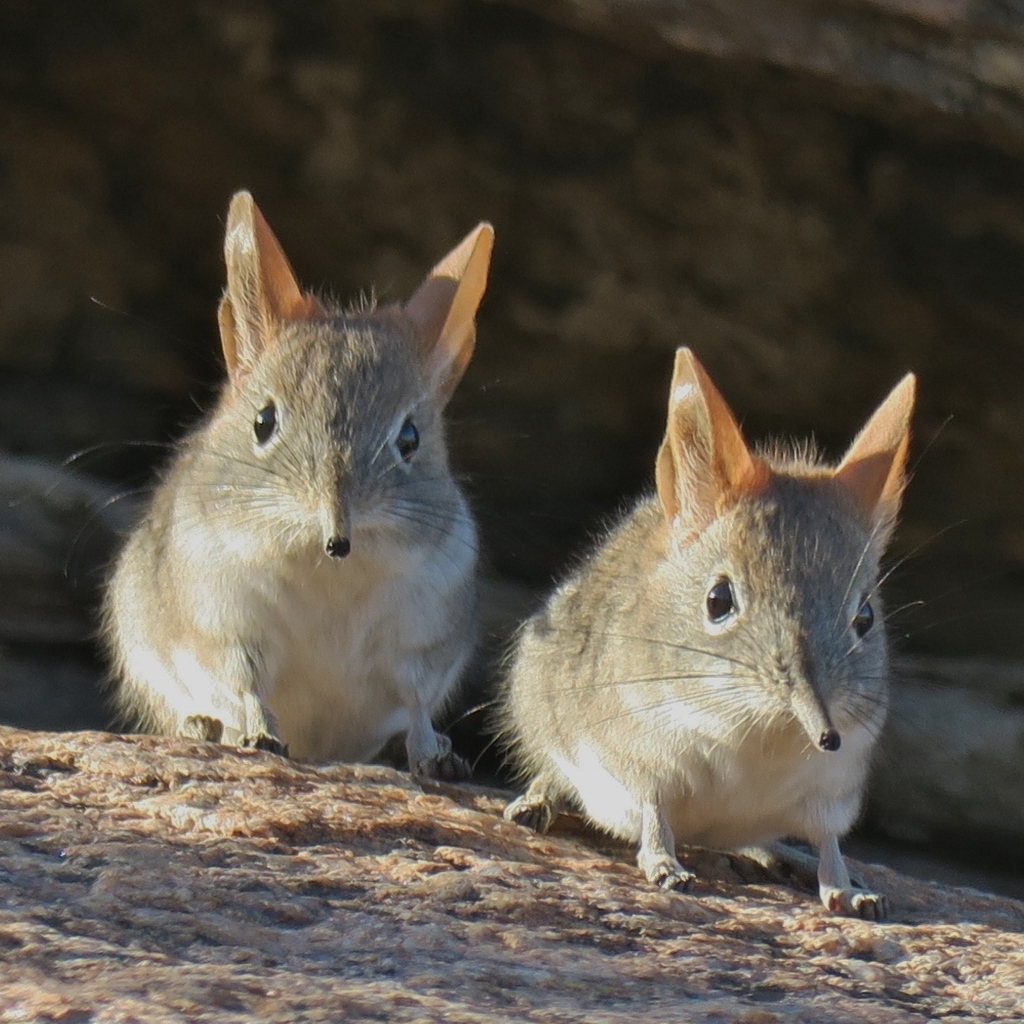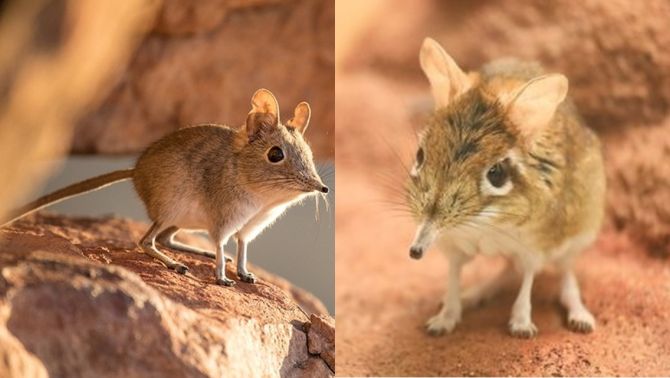The Little Cousin of Giants 🐾🌍✨

Related Videos:
In the rugged landscapes of Namibia and South Africa, where golden light pours over stone cliffs and desert winds whisper through ancient rocks, lives a creature so tiny that it could vanish in the palm of your hand. Most people would mistake it for a mouse scurrying between shadows. But look closer, and you will see something extraordinary.
![ẢNH] Những động vật có chiếc mũi đặc biệt](https://ddk.1cdn.vn/2021/03/14/image.daidoanket.vn-images-upload-linhdh-03142021-_5.jpg) This is the Western rock sengi (Elephantulus rupestris) — a mammal so small it weighs only about 70 grams (2.5 ounces). With its twitching nose, bright eyes, and swift, darting movements, it seems fragile, almost unnoticeable in a world of predators and towering beasts. Yet, the sengi carries within its bloodline a secret that defies appearances: its closest relatives are not rodents at all, but the great elephants of the savanna and the gentle sea cows gliding through rivers and seas. 🐘🐋
This is the Western rock sengi (Elephantulus rupestris) — a mammal so small it weighs only about 70 grams (2.5 ounces). With its twitching nose, bright eyes, and swift, darting movements, it seems fragile, almost unnoticeable in a world of predators and towering beasts. Yet, the sengi carries within its bloodline a secret that defies appearances: its closest relatives are not rodents at all, but the great elephants of the savanna and the gentle sea cows gliding through rivers and seas. 🐘🐋
It is almost impossible to imagine — how could this pocket-sized insect hunter be kin to Earth’s largest land animal? But nature’s family tree is full of surprises, and the sengi is living proof of evolution’s wonders.
 Life for the sengi is a game of speed and memory. From the moment the sun rises, it darts across rocky outcrops, tracing invisible highways — intricate paths it memorizes down to every twist and turn. These “roads” are lifelines, escape routes carefully rehearsed. When danger comes, whether from a swooping bird of prey or a slinking predator, the sengi vanishes in a flash, disappearing into the safety of narrow crevices that only its tiny body can slip through.
Life for the sengi is a game of speed and memory. From the moment the sun rises, it darts across rocky outcrops, tracing invisible highways — intricate paths it memorizes down to every twist and turn. These “roads” are lifelines, escape routes carefully rehearsed. When danger comes, whether from a swooping bird of prey or a slinking predator, the sengi vanishes in a flash, disappearing into the safety of narrow crevices that only its tiny body can slip through.
 Its diet is as humble as its size: ants, termites, and other small insects. Yet every bite fuels its endless agility, every movement keeping it alive in a land where even the smallest mistake could mean the end. In its silence and swiftness, the sengi reminds us that survival is not always about brute strength — sometimes, it is about knowing the land like the back of your paw, about resilience stitched into every heartbeat.
Its diet is as humble as its size: ants, termites, and other small insects. Yet every bite fuels its endless agility, every movement keeping it alive in a land where even the smallest mistake could mean the end. In its silence and swiftness, the sengi reminds us that survival is not always about brute strength — sometimes, it is about knowing the land like the back of your paw, about resilience stitched into every heartbeat.
And yet, beyond survival, there is poetry in its existence. To stand in the desert and watch a sengi vanish between stones is to be reminded that all life is connected. That the same Earth that shaped the tusks of an elephant also carved the whiskered nose of this little wanderer. That greatness does not only lie in towering size, but also in the quiet persistence of the small.
 The Western rock sengi is a whisper in the vast symphony of life — easy to miss, but unforgettable once you notice. It teaches us that nature is not a hierarchy, but a tapestry. Every thread matters. Even the smallest creature can be kin to giants, carrying the same spark of life, the same ancient story, across millions of years.
The Western rock sengi is a whisper in the vast symphony of life — easy to miss, but unforgettable once you notice. It teaches us that nature is not a hierarchy, but a tapestry. Every thread matters. Even the smallest creature can be kin to giants, carrying the same spark of life, the same ancient story, across millions of years.
So next time you hear the scamper of tiny feet across warm desert stones, remember: you may be closer than you think to the cousin of an elephant. 🌿✨











